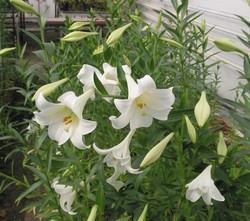How cold temperatures control lily flowering
Lilies are economically valuable plants that require a prolonged period of exposure to cold temperatures for flowering. Understanding how the plant's genes control the timing of this vernalization process in lily bulbs would be helpful for commercial lily breeders and growers. The EU-funded LILY VERNALIZATION (Identification of vernalization-related genes in Easter lily bulbs for molecular markers production, vernalization control and improved flower production) project identified genetic changes that occur during lily vernalization. Developing a better understanding of how vernalization is genetically regulated could allow lily breeders to control when the bulbs flower. Researchers stored Lilium longiflorum (Easter lily) bulbs at 4 °C for different lengths of time ranging from 0 to 9 weeks. They then looked at how lily genes responded to these varying lengths of cold exposure. After identifying over 15 000 genes that were either up- or down-regulated during vernalization, researchers broadly classified them as either enhancers or inhibitors of flowering. To confirm their biological role, researchers expressed selected genes in a lily plant and in a non-bulb plant called Arabidopsis. They demonstrated that genes up-regulated by cold exposure induced early flowering in both plants, indicating that the same mechanism occurs in very different species. Associating certain cold-responsive genes with flowering, can lead to the development of biological markers to determine the optimum amount of cold required by a lily bulb to flower, enabling breeders to control when bulbs and potentially other ornamental plants flower may fundamentally change the flower production industry.



